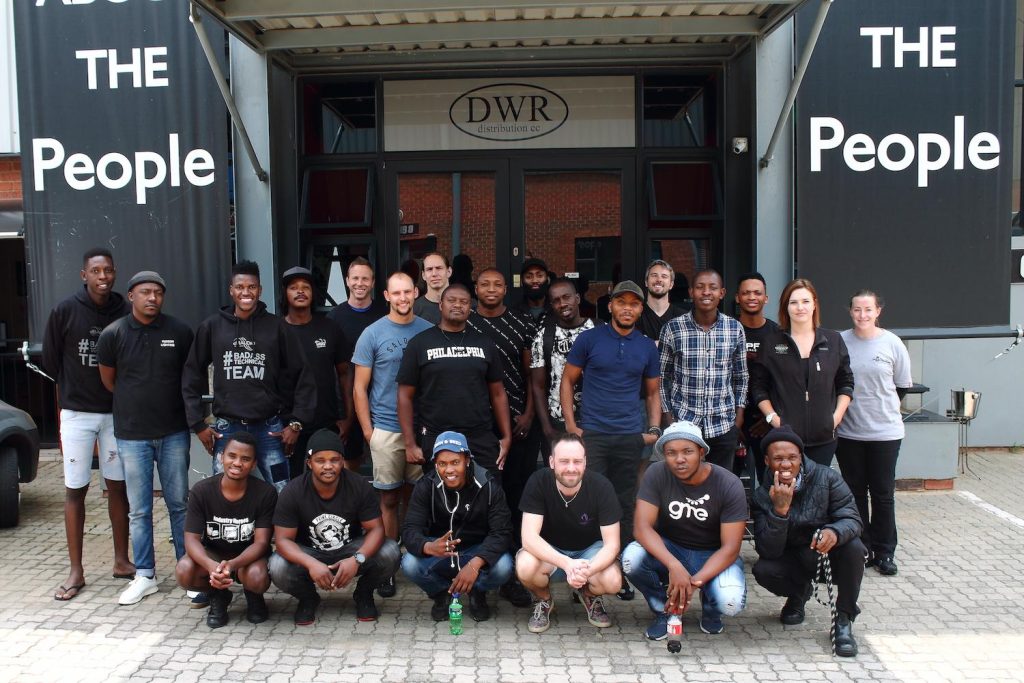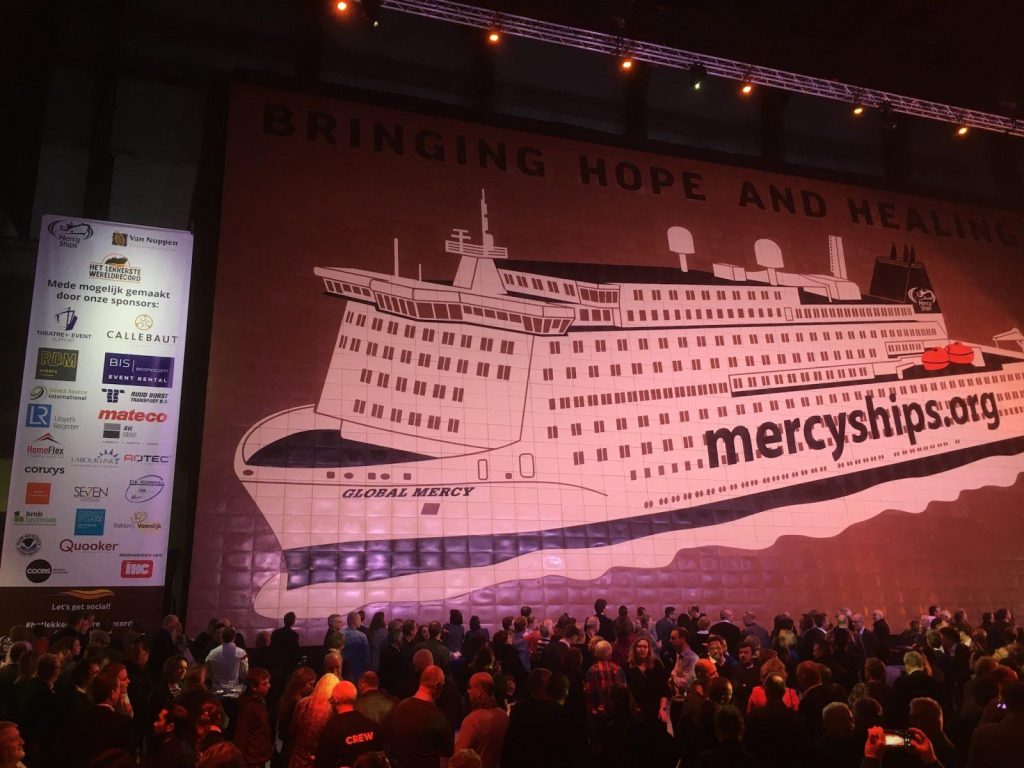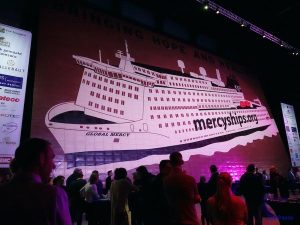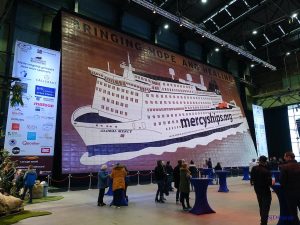Just before touching down in South Africa to host DWR Distribution’s annual Rigging Training Course, Ruud de Deugd, an internationally renowned rigger and training presenter, had a role to play in building the largest chocolate bar – by area – and setting an official Guinness World Record, with all profits going to Mercy Ships.
“Mercy Ships is a floating hospital that gives surgeries to some of the poorest people in the world,” said Ruud. “The organisation is coming up with a new ship for the East Coast of Africa, which is how I got involved as a sponsor for their chocolate project. If you speak to the people who work on the ships, you realise how difficult the situation is.” The good news is that the team provides medical procedures to people who would ordinarily not be helped. “They can fix the eyes of a vision impaired child in fifteen minutes and then for the rest of his life he will see. Without the ship, the chances of him ever seeing would be unlikely.”
The Mercy Ship website explains that in sub-Saharan Africa, there are only two physicians per 10,000 people, and because 50% of the population lives near the coast, the hospital ships are the best way to reach those in need. The floating hospitals efficiently bring safe, sterile operating rooms and hospital beds directly to people in need so that the volunteer medical staff can provide free surgeries. Mercy Ship also builds medical capacity in every port they reach, training doctors, providing equipment and opening medical facilities so that improved healthcare continues in their wake.
To bring awareness to Mercy Ships, chocolatier Frits van Noppen broke the Guinness World Record by creating the largest chocolate bar measuring 383.24 sqm and weighing thirteen tonnes! Ruud in turn sponsored, designed and built the structure to hold the sweet masterpiece that consisted of 1,620 large elements of chocolates, later sold off to support Mercy Ships, and which was unveiled in Rotterdam, the Netherlands on 6 February.
Four days later, Ruud was in South Africa presenting DWR Distribution’s annual Rigging Training Course.
“We asked Ruud to present this year’s course as he is a current and active rigger in our industry who works on massive events all around the world,” explained Robert Izzett of DWR. “What makes him exceptional is that he is also an engineer. Ruud started in the industry as an audio engineer and quite liked it. When he got into structures and hanging PAs, he realized that he needed to know more. He went back to university to study mechanical engineering and then re-joined the industry and started working for Prolyte, a manufacturer of hardware products and safe structural solutions for the entertainment industry. Ruud was instrumental in some of the company’s largest structures such as the Prolyte Space Roof, where he was involved as an engineer on the team. He has since been involved with many other Prolyte projects.”
Ruud also has his own business and many festivals rely on his expertise when building massive outdoor roof structures. “Ruud will design the structure, be on the rigging team to put up the structure and then is the engineer who signs it off,” Robert comments. “Essentially, he will spend a week on a big structure in his harness, up and down looking at every nut and bolt. He is in a unique position as the designer, rigger and the engineer who signs the structure off and takes liability. It is impressive and I think it gives him so much more scope when it comes to looking at a project and the dangers involved.”

Besides the practical knowledge, Ruud has great insight to safety and legislation with regards to the manufacturing of products. He sits on various technical committees who make the laws in Europe pertaining to the entertainment industry.
“When it comes to rigging, the consequences of getting it wrong is massive,” said Robert. “Our aim is to stay in line with international standards. While we have laws in South Africa, we need more people involved, particularly the government. Sadly, it’s often the case that the government only gets involved once people die. As an industry, we have to learn from other people’s accidents, implement the laws they have in place and get our industry to adhere to a high standard to prevent any fatal accidents.”
When it comes to training, one of Ruud’s greatest challenges is presenting to delegates with varying levels of knowledge and experience. With this in mind, he kicked off the workshop on the very first day with an examination. “While the marks were irrelevant, this was a short exam to see what level the class were at and where they most needed the training,” explained Robert. “In this way, he was able to shape the course accordingly.”
The training ran over six days and saw delegates completing a theoretical and practical examination to pass.
With a heart for people, Ruud concludes, “When it comes to riggers, the funny thing is that while people have been working in the business for many years, they’re still learning. You see that eureka moment in their eyes when they realize, ‘yes’ that’s why we do this. The awareness is really cool. One of the guys came up to me and said, ‘Hey Ruud, I think I’m beginning to understand,’ and for me, that’s brilliant.”
For more information visit:






